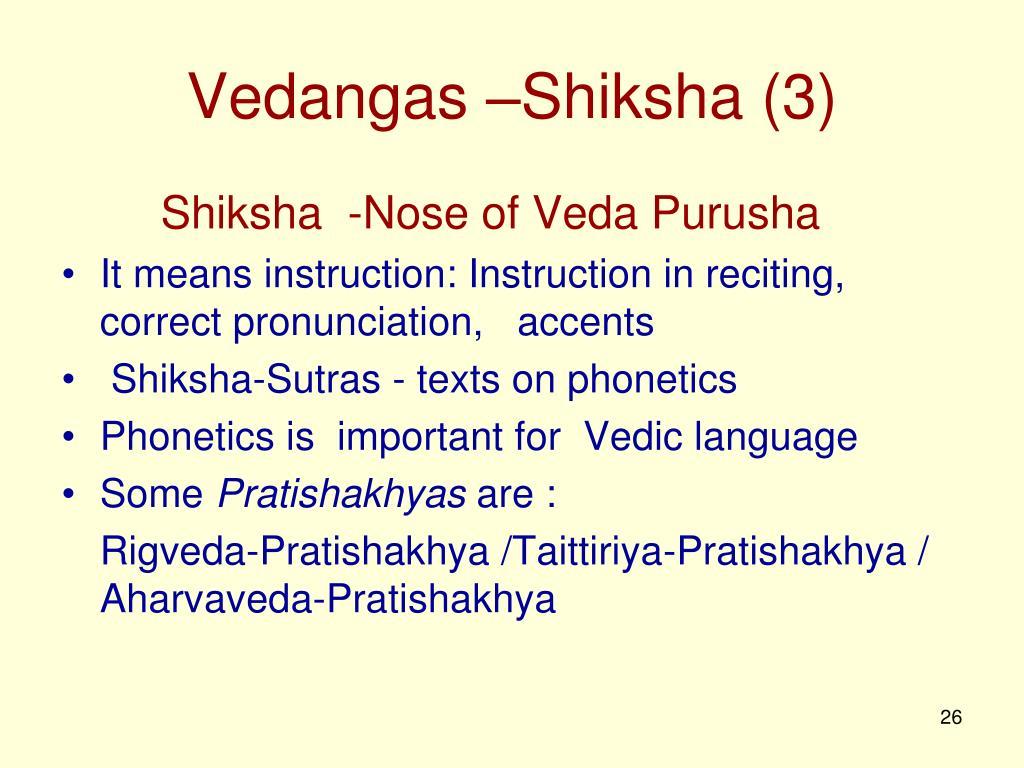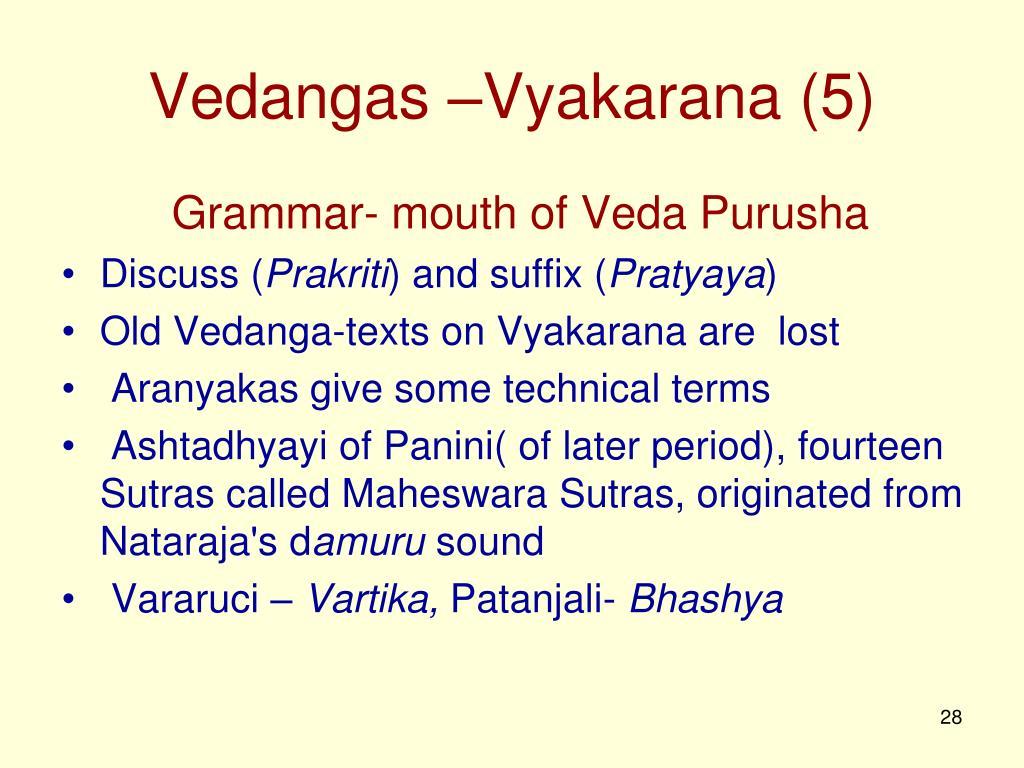Vedangas I - Brief on Shiksha and Vyakarana
Prologue on Siksha and Vyakarana
I. Siksha - The Science of Pronunciation
A. Meaning of Shiksha
- Derived from the root word meaning "to acquire knowledge".
- In the context of Vedangas, it signifies the science of pronunciation.
- Focus is on acquiring the knowledge of proper pronunciation.
B. Focus of Shiksha Shastra
- Systematic approach to the art and practice of phonetics.
- Preserving Vedic texts from any form of corruption is the most important aspect.
- Preservation of sound is key, with a focus on proper enunciation of each syllable.
- UNESCO has recognised this as a heritage to be preserved
C. Analysis of Sound (Nada)
- Nada, or sound, is generated by the confluence of air and space in the vocal cord.
- The location in the oral cavity which generates the sound results in different words.
- The smallest component of sound is called a 'varna' (like "a", "i", etc).
- Sounds vary based on contact between parts of the tongue and places of articulation.
D. Places of Articulation
- Nasika: Sounds require nasal cavity involvement (e.g., "hm").
- Murdha: Sounds made when tongue touches the upper palate (e.g., "ta, tha, da, dha, na, ra, sha, rh").
- Osthau: Sounds made using lips (e.g., "u, pa, pha, ba, bha, ma").
- Dantah: Sounds made when tongue hits teeth (e.g., "rh, ta, tha, da, dha, na, la, sa").
- Talu: Sounds made when tongue touches the Palate (e.g., “i, cha, ja, jha, nja, ya, sha”)
- Kanta: Sounds generated from the throat (e.g., "ka, kha, ga, gha, nya, ha, aa").
- These precise observations and classification ensured the preservation of Vedic mantras through the ages.
E. Conclusion of Shiksha
- Shiksha has ensured that mantras are not pronounced differently and the original form is maintained even after thousands of years.
II. Vyakarana - The Science of Grammar
A. Meaning of Vyakarana
- The root word “vya karana” means to divide, separate or analyze.
- It is the science of grammar and the grammar tradition goes far back to the Vedic era.
B. Role of Panini
- Panini (600 BCE) created a structured work of Sanskrit grammar called Ashtadhyayi.
- Ashtadhyayi is known for its brevity, systematization and its widespread use.
C. Function of Vyakarana
- Deals with how a word can be broken down into components.
- Uses a method by which one can generate words by joining components and analyzing them
- Sanskrit grammar, thus, allows for both constructing words and reverse-engineering them.
- Sanskrit grammar uses unambiguous and rule-based methods to construct words.
D. Modern Day Parallels
- Vyakarana features parallels to modern-day data processing:
- Methods for creating lists based on processing logic.
- Algorithmic approaches to process language.
- Application of recursive logic to process data.
E. Conclusion of Vyakarana
- Vyakarana is a Vedanga that brings the syntax and the grammatical dimensions to the language.


